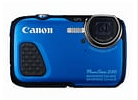milkshakelake
Structural
Anyone have a good solution for taking photos of structures? Problem: My iPhone takes the best pictures, especially in dark places. It doesn't look very professional to clients, though.
I've tried using Fuji X-E1 ISO 3200 F2.8 with shutter 1/125s, but the photos come out grainy and sometimes blurred because of the large aperture. I usually take a shot where my flashlight is pointed. I've also tried Sony RX Vii (more portable for tight crawl spaces and getting behind sheetrock) but have similar results. I'm wondering if I'm doing something wrong, because my iPhone simply takes clearer and more focused pictures. It has a mode where I hold up the camera for a few seconds in dark spaces and the results are usually good.
The other thing I was thinking about was using flash, but it would hurt the portability of the Fuji X-E1. And my poor Sony RX Vii can't keep up with recharging its flash with how many pictures I take, like 200 or so per building. It's not about the batteries, because I carry spares; it's about the time between shots.
I've tried using Fuji X-E1 ISO 3200 F2.8 with shutter 1/125s, but the photos come out grainy and sometimes blurred because of the large aperture. I usually take a shot where my flashlight is pointed. I've also tried Sony RX Vii (more portable for tight crawl spaces and getting behind sheetrock) but have similar results. I'm wondering if I'm doing something wrong, because my iPhone simply takes clearer and more focused pictures. It has a mode where I hold up the camera for a few seconds in dark spaces and the results are usually good.
The other thing I was thinking about was using flash, but it would hurt the portability of the Fuji X-E1. And my poor Sony RX Vii can't keep up with recharging its flash with how many pictures I take, like 200 or so per building. It's not about the batteries, because I carry spares; it's about the time between shots.

